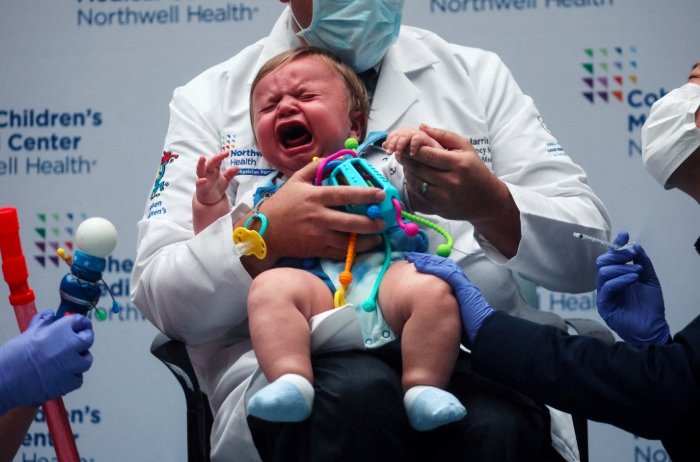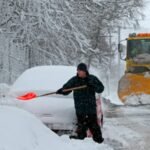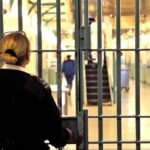A major shift in how vaccines are given out in Scotland has sparked worries that children in the poorest areas face higher risks from diseases like measles. This change, rolled out from 2021 to 2023, moved most childhood shots from local doctors offices to big central hubs run by health boards, leading to drops in vaccination rates especially among families in need.
Experts point out that this setup makes it harder for busy parents in remote or deprived spots to get their kids protected on time. As measles cases climb across the globe and in nearby England, Scotland’s falling MMR vaccine uptake could spell trouble for herd immunity and spark local outbreaks if not fixed soon.
The Move to Central Hubs and Its Early Warnings
The Vaccination Transformation Programme took over childhood and seasonal vaccines from general practitioners under a 2018 contract update. Health boards now handle most deliveries through large sites, stopping most GP practices from keeping or giving shots even when parents bring kids in for checkups.
This led to what some call empty fridge syndrome, where doctors spot a chance to vaccinate but must send families elsewhere, often far away. Right from the start, community health workers flagged risks of delays and lower uptake in hard to reach places like rural towns.
Before this switch, GP led efforts kept rates steady above 94 percent for the first MMR dose in young kids. Now, national figures show a dip to 92.8 percent by age two in 2024, with signs of further slides in 2025 data released in September.
The programme aimed to streamline services and cut costs, but critics argue it overlooked how travel and access barriers hit deprived groups hardest. In areas without nearby hubs, families juggle work, transport costs, and child care, making follow up appointments tough.

Gaps Grow in Deprived Areas
Public health reports from late September 2025 highlight a clear trend: vaccine uptake is rebounding slightly in wealthier neighborhoods but dropping in the most deprived ones. The gap between kids in the richest and poorest areas for the first MMR shot now stands at 3.7 percent for six year olds, up from under one percent before 2020.
In NHS Highland, the difference hits nearly 10 percent, with only 88.2 percent of deprived kids getting the first dose compared to 97.8 percent in better off spots. For the second dose, the divide jumps to 17.1 percent, leaving just 75.6 percent fully protected in the neediest groups.
Similar patterns show up in other boards like Tayside and Grampian, where gaps reach 14.5 percent and 16.4 percent for boosters. This uneven coverage turns schools in poor areas into potential hot spots for outbreaks, as unvaccinated kids cluster together.
Pandemic disruptions played a role early on, but recovery has been uneven. Least deprived families caught up quickly, while those in SIMD one and two zones lag, possibly due to hub locations favoring urban centers over remote villages.
Rising Measles Cases Spark Alarm
Scotland saw just one measles case in 2023 but jumped to 24 in 2024, and by late October 2025, reports confirm 28 infections so far this year. While still low compared to England is 772 cases and one death, the uptick mirrors a global surge with Europe logging over 127,000 cases in 2024 alone.
Young kids under five make up 40 percent of European cases, and without treatment options beyond support care, measles can cause severe issues like pneumonia or brain swelling. The MMR vaccine offers over 95 percent protection with two doses, but hitting the World Health Organization is 95 percent target for herd immunity proves tough amid access woes.
Travel from outbreak zones in the US, Canada, and Europe brings the virus home, straining local services. In Scotland, clusters appear in urban spots like Glasgow, but experts fear spread to vulnerable rural communities if uptake keeps falling.
Recent pleas from health leaders urge parents to check records and book shots, tying the rise to both hesitancy fueled by online doubts and delivery hurdles from the programme.
| Health Board | MMR1 Uptake Least Deprived (%) | MMR1 Uptake Most Deprived (%) | Gap (%) |
|---|---|---|---|
| NHS Highland | 97.8 | 88.2 | 9.6 |
| NHS Tayside | 96.5 | 82.0 | 14.5 |
| NHS Grampian | 95.2 | 78.8 | 16.4 |
| National Avg | 94.0 | 90.3 | 3.7 |
Why Trust in Vaccines Wanes and What It Means
Post pandemic fatigue and echoes of COVID debates have stirred skepticism, with some parents delaying routine jabs amid broader distrust in health systems. Social media buzz on platforms like X and Reddit shows mixed views, from calls to vaccinate kids to worries over past mandates eroding faith.
In deprived spots, everyday barriers compound this: long waits at hubs, lack of flexible hours, and transport issues keep rates down. One recent study notes ethnic minorities and low income families face extra hurdles, widening inequalities seen in other UK areas too.
This reversal threatens decades of progress, where vaccines saved millions worldwide. Scotland is high coverage nation, but current trends risk dividing kids into safe and exposed groups, echoing global challenges in places like the US where outbreaks strain resources.
Health pros stress prevention beats cure, as measles spreads fast in under vaccinated pockets. Fixing access now could avert a crisis, much like how quick action curbed earlier scares.
Calls for Action to Protect All Children
Leaders in public health push for reviews of the transformation programme, suggesting hybrid models where GPs handle opportunistic shots in remote areas. Over 90 percent of Highland practices want to resume vaccinations, per local feedback, to boost uptake without full reversal.
Boosting community outreach, like school based clinics and home visits, could help deprived families. Tying in education on vaccine safety might counter misinformation, rebuilding trust step by step.
As winter nears and travel peaks, timely fixes matter. Families should contact their health board to catch up on missed doses, ensuring kids stay safe from preventable ills.
Share your thoughts on this issue in the comments below and help spread awareness by sharing this article with friends and family. Your voice could push for the changes needed to safeguard Scotland’s children.


















